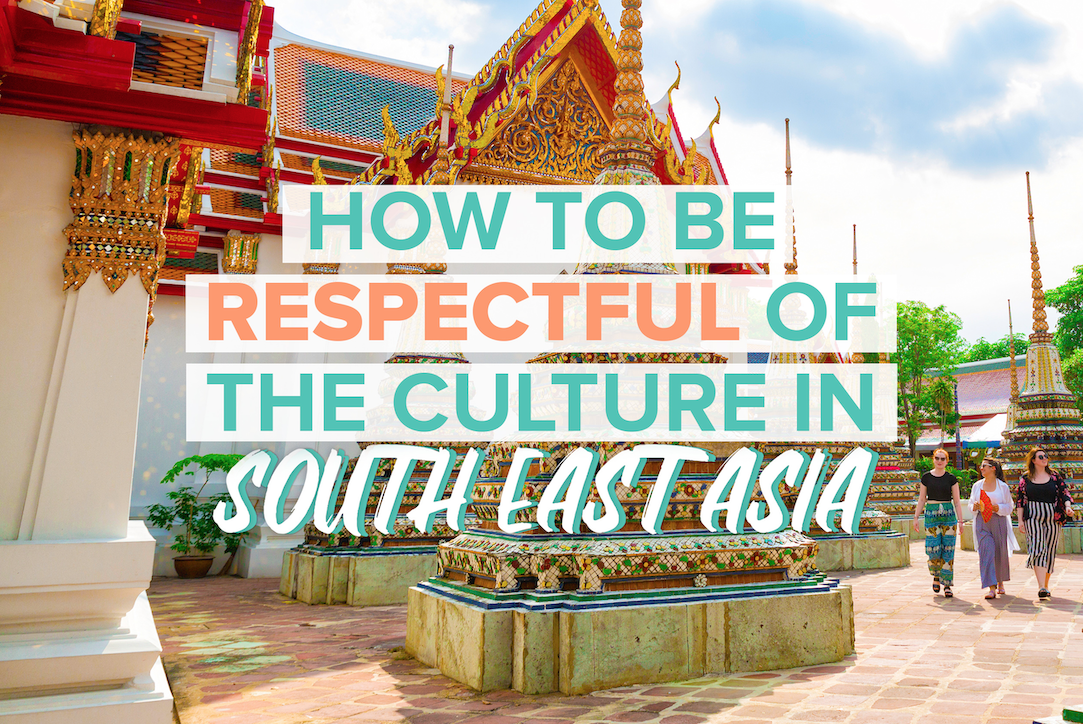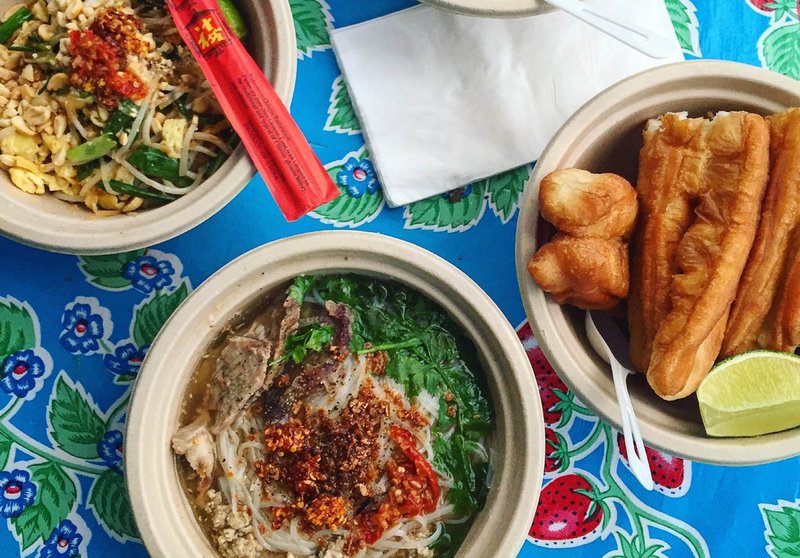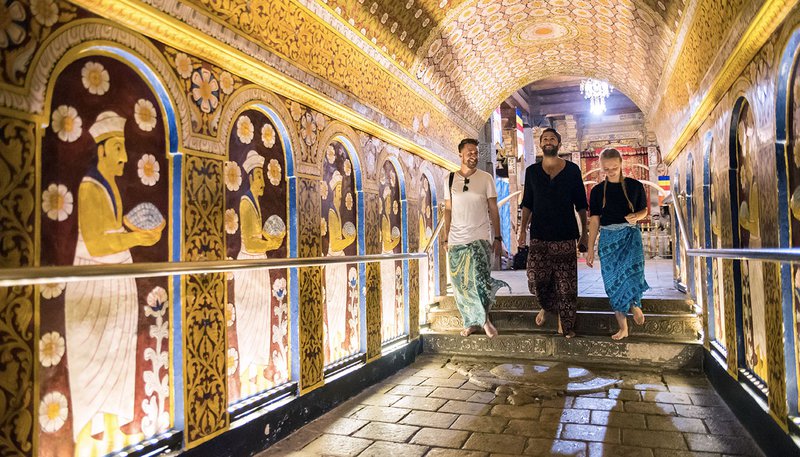How to be Respectful of the Culture in South East Asia

When travelling around a foreign country don’t worry too much about making mistakes, but you can still try your best to follow the cultural customs of the place you are visiting! When in doubt, observe how others act and try your best to follow suit. Putting in an effort to learn the cultural customs of a new region will help you... even if you end up making a few mistakes! Here are a few tips of our top tips to help you travel respectfully in South East Asia.
Greetings
Bowing with hands together is a common greeting. In Laos this is called “nop”, Thailand a "wai" and Cambodia a “sompiah.” Men can join hands and bow, while women nod and bow. However, westerners are most often greeted with a simple handshake, but you should generally try to avoid shaking hands with someone of a higher rank. Try looking up a few youtube videos if you want to practice. If you are invited into someone’s home, also make sure you take your shoes off!

Body Language
In Buddhist culture, the head is considered the most sacred part of the body. So there are a number of social rules to follow around this. Don't touch anyone else’s head or pass anything over their head, especially children. Pointing your fingers upwards at something is a gesture considered offensive. The only appropriate way to get someone’s attention is with your entire hand and fingers facing down. Pointing with your feet, or showing the bottom of your feet is also disrespectful, particularly around religious symbols such as Buddhas. Also, Asian cultures are generally pretty conservative. PDA is considered inappropriate and uncomfortable to others, and it is best not to hold hands with a member of the opposite sex in public. However, holding hands with someone of the same sex is considered normal for friends to do.
Eating Customs
When sitting down to a meal (usually on the floor), it is respectful to wait for the eldest person to sit down first and serve themselves before helping yourself to food. There are not always serving spoons with each dish. In this case, turn your chopsticks around to serve yourself. It is considered proper to eat with your right hand, as the left is typically reserved for sanitary activities. However, when passing dishes you should use both hands. Pace yourself throughout the meal and try to rest every few mouthfuls and place your chopsticks down. Asian dishes can get hot and make your nose run, but do your best not to blow your nose at the table! Try to be discreet and get up to leave first before returning to the table.

Conversation Guidelines
Learn some basic words in the language of the country you are travelling. Simple phrases like “hello,” “please,” and “thank you” can go a long way, and shows that you've put the effort in. It is considered rude and interrogating to ask a lot of personal questions. When passing someone on the street it’s customary to nod and smile rather than engage in short conversation. Err on the side of being as polite as possible. Avoid losing your temper, especially in public, as displaying anger is taken as a sign of personal weakness.
Temple & Mosque Etiquette
Generally, at sacred sites, you should make sure to cover cleavage, shoulders, belly, and thighs (shorts and a tank top can be seen as offensive). If you plan on visiting any temples, expect to be denied entry unless you’re covered from shoulders to knees. In mosques, women will also be expected to cover their hair. No matter where you are, try to be as respectful as possible when observing religious practices. This includes not using cameras and videos to record sacred ceremonies. When observing religious practices in public, you should avoid talking loudly and taking flash photos. If you see monks in temples, especially as a woman, do not touch or hand anything to a monk as it is forbidden. Also, look out for Buddha statues in temples, always take a few steps away before turning your back and never turn your back to a Buddha for a selfie!

Overall, you shouldn't run into any trouble if you do make a mistake with these traditions, yet, it's always best to be respectful and do your best to abide by the rules as a visitor.
Does this talk of travel have you dreaming about your next holiday? Check out our small group tours backpacking Asia, Australia and beyond here.



